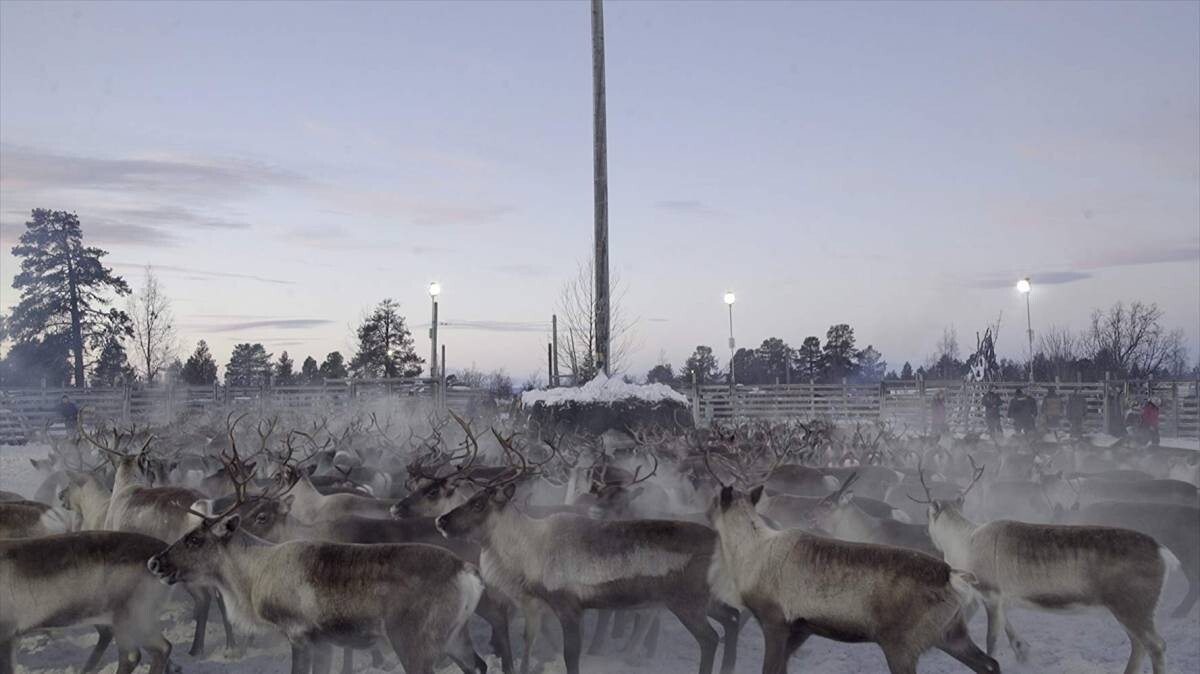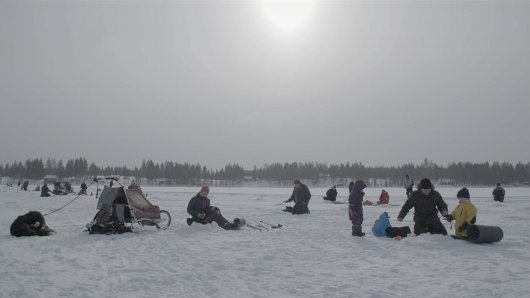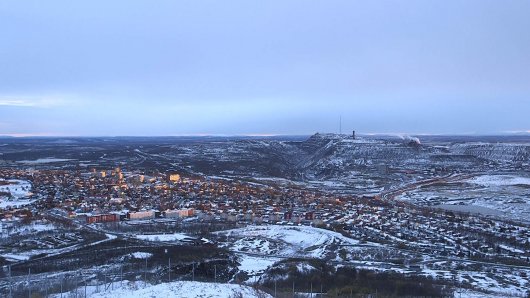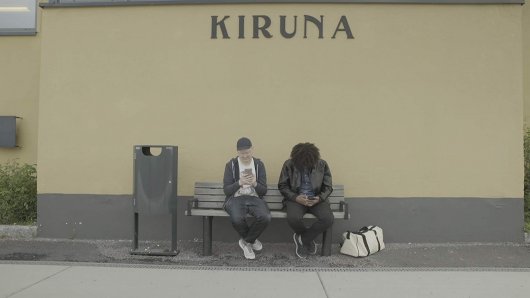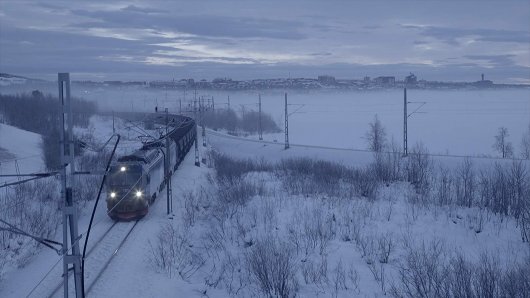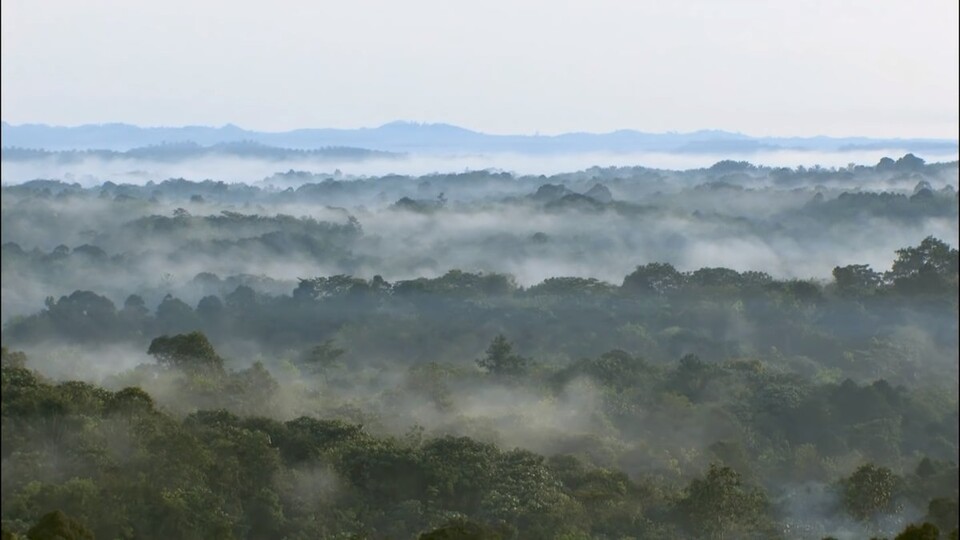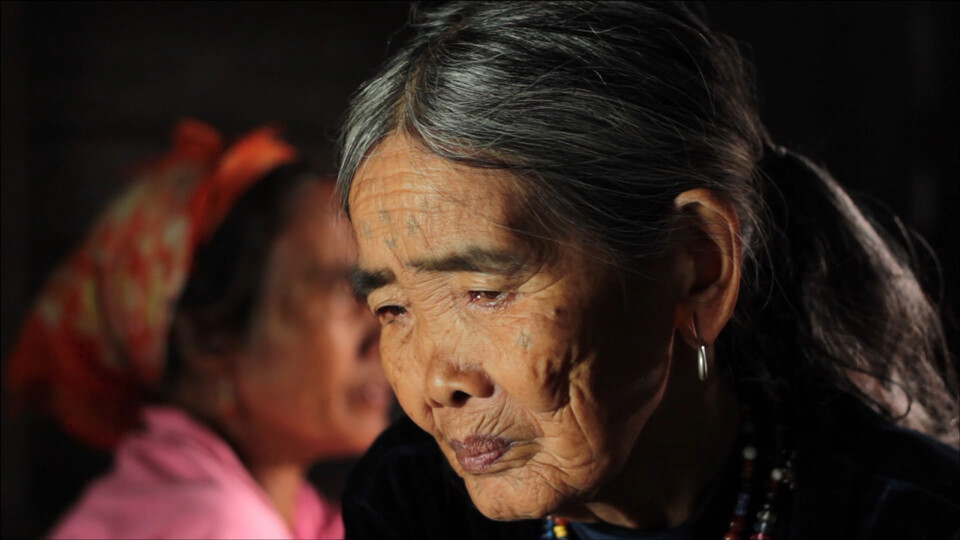Greta Stoklassa: I Read Rather than Preach the Reality
Kiruna is a Swedish town beyond the Arctic Circle, a part of which is to be moved so as not to sink into the earth. Adjacent to Kiruna lays the biggest iron ore mine in the world due to which the foundations of the buildings in the town are disturbed. But this is not the only problem discovered by young Czech documentary filmmaker Greta Stoklassa in this corner of the world. She believes that Kiruna is an illustration of the dark side of the developed world. Her feature-length debut Kiruna – A Brand New World will be premiered at the Ji.hlava Documentary Film Festival, competing in two categories: in the Opus Bonum section for the best documentary film of the year, and the Czech Joy – the best Czech doc – competition.
Kiruna is a living metaphor of how mankind is pulling its own trigger. Due to the mining and the related increased production and growing profit, the town centre needs to be moved and over ten thousand persons have to leave their homes. Was it this metaphor of the world what inspired you to shoot a film about Kiruna?
At first, I considered this metaphor quite powerful – people are digging a hole under their feet and then have to run away from it. But when I was actually on the spot, I was surprised not to see any big conflict between the town people and the mining company. Conflicts of a rather social character have arisen, and they are more nuanced. Therefore I opted for the feature-length format to provide a more complex perspective of the situation in Kiruna and to include more characters and their stories. I was wondering to what extent to cling to the original concept and how much to change based on what was actually happening. But I suppose that every author encounters such a problem. Issues emerged in the course of time that I generally find important to deal with, such as the refugee crisis, relationship with the original inhabitants, with identity and the environment, or with intangible values. These issues are topical anywhere in the world, but they have become more prominent in Kiruna because it is a small town. Moreover, thanks to its relocation, the town has the possibility to start from the scratch. Swedish people tend to be such “good guys” and try to plan an ideal world where everyone will live in happiness and harmony. During the shooting in Kiruna, they realised that not everything can be carefully planned despite the efforts of the state, because there are still a lot of things that will never fit into their boxes. This is a Swedish specific, Czech people have a different attitude. The Swedes always try to take all social groups into account, they grant privileges to the original inhabitants of Kiruna – the Sami – try to include immigrants into society but some things remain that the system cannot cover, for instance a person’s identity. Identity cannot be assigned, everyone has to find it themselves. Identity is usually the last resort which people cling to and which they can own, but which cannot be determined by the system.
It is quite surprising to hear that the town inhabitants didn’t have such a big issue with having to move their homes and the town centre as one might have expected. How come?
This was my biggest shock. My expectations were completely different. I thought that people would be demonstrating and protesting against the relocation. On the other hand, this is typical for the Swedes – demonstrations are not their thing. I gradually got to understand what was specific for the situation in Kiruna, as opposed to the Czech town of Most, for instance, which also had to be partly moved during the socialist times. Most used to be an old town which turned into a mining town, whereas in Kiruna everything emerged at the same time – the town was founded because of the mine. People would have no other reason to live there – they moved to Kiruna for work. The symbiosis of the town and the mine in Kiruna is different and the relocation is considered a pragmatic move: If we want to live in Kiruna we just need to move on.
From the film Kiruna – A Brand New World
You decided to find real problems in Kiruna, especially those related to the issue of identity. How did you choose the three protagonists whose stories you followed in the film?
It was quite a long process. I had been to Kiruna many times before we even started shooting, at one point I was so overwhelmed that I didn’t know what to focus on. Besides, I made the film while studying for my bachelor’s at the Documentary Film Department at Prague’s FAMU and some teachers pointed out that the film lacks a clear conflict. I struggled too to pinpoint the conflict in the town. There are no clear pros or cons, it is much more complex and more nuanced. Conflicts in Kiruna are perceived on a different level, they are hidden under the surface like iron ore mined there. For example, I focused on the Sami population that is privileged to own and breed reindeer, which the Swedish are not allowed to do. The Sami get various subsidies for breeding reindeer and the reindeer have different routes they follow in different seasons. The routes have been there for centuries and lead directly through this area. Due to mining and global warming the routes are becoming increasingly more narrow and it can happen that thousands of reindeer are having a hard time going through a narrow pass or they don’t get to their food at all and have to be fed artificially. So actually, the Sami represent a sort of an environmental movement and they also protest against iron ore mining. Moreover, they were long considered second-rate inhabitants of Kiruna, subjected to racial experiments during WWII, and until the 70s they were recommended not to attend universities. Conflicts between the Sami and the Swedes sometimes still occur. To me, the Sami represented an interesting aspect of Kiruna and I chose Maja to be one of the protagonists. She is a young Swedish Sami who, however, is not raised in a traditional Sami family and is still learning the language and searching for her identity. She has realised that she is neither Swedish nor Sami.
Another significant figure in your film is aging teacher Timo who disagrees with the relocation of the town and tries to spark a discussion among the people of Kiruna about the substantial issues, such as our relationship to the place we are living in. How did you find him?
Timo is perhaps the only activist in Kiruna more significantly engaged and fighting against its relocation. He used to be a member of the green party and it is natural for him to be politically engaged, he organises debate meetings about how much people are linked to their past, their memories, and the place they live in. Not as a professional but he is doing well. Nobody else is doing anything like that. I met Timo just after my first arrival in Kiruna but only decided to start shooting with him much later – I was not sure whether his character would provide enough material because he had the tendency to be performative and to be his own director. I have the experience that those who don’t want to be filmed are often much more interesting than those who are keen to be on camera. It was only when I got closer to Timo that his characters started to be more structured.
What was the story about your third protagonist, Abdal Rahman, a refugee from Yemen?
I visited various events in Kiruna and I also went to a language café attended by many asylum seekers learning Swedish. There was a lot of very young boys from Afghanistan, Syria and Iraq and quite a few old Swedish ladies. The refugees formed a sort of a new family because most of them came alone and all were waiting for an interview to find out about their asylum status. Abdal was the youngest of all, he was sixteen when he arrived in Sweden. When I met him, he was already speaking fluent Swedish but remained excluded from the society and his main goal was to get permanent residency and become Swedish. However, he had been waiting for the interview for two years and he was slowly starting to give up, became depressed, clinging more and more to his Yemeni roots. One example of how the system can grind people up so they lose motivation to integrate... I am still telling to myself that quite a few storylines are missing in my film but then I realise that many steps preceded that have consequentially led to this outcome.
From the film Kiruna – A Brand New World
What do you feel is missing?
For instance, we were following one miner, a young boy who moved to Kiruna for work, but he wasn’t too happy there and wanted to leave. At first, he was quite annoyed to be filmed and then he stopped communicating. For quite a long time I also tried to find some story that would connect the mine workers with the town inhabitants. So we focused on one family living close to the mine that was also supposed to move. The father of the family worked in the mine. We wanted to document the entire process of relocation, but the father had a serious injury and when he returned home from the hospital, the family wanted to spare him the stress related to filming so we gave up on this storyline as well. I regretted that a lot because we had collected a pile of material. The final decision about what will make it into the movie is a combination of chance and some reasoning.
Your film has a distinct visual and sound composition, creating a mesmerising effect and underscoring the dreamlike atmosphere of a place beyond the Arctic Circle. I recall extremely long shots opening your film, for example the one in which the snow-covered landscape is cut in half by a train, a running herd of reindeer and a car coming into a tunnel as if entering a mine. Did you and cinematographer Stanislav Adam intentionally work with these visual symbols?
We tried to. At FAMU, documentarian and lecturer Jan Gogola Jr. repeatedly pointed out that the film’s form should somehow contain the topic. Kiruna is a town on the move, which is also why the film contains scenes of different things moving – a house on wheels, trucks with graduating students, a train in the opening scene, reindeer on the run. We made sketches of the scenes in which we roughly knew what was going to happen. But when for instance Abdal Rahman had his interview with his legal guardian, we could not intervene and were limited in terms of the shooting possibilities. The crew got fully in tune during the shooting process and you can tell what was made in the beginning and what was shot later on. In the beginning I was somehow subconsciously afraid to follow the people closely with the camera so the situations are more often composed of large shots only gradually proceeding to medium close-ups. We enjoyed working with long shots first – I like films that employ this technique, but we soon realised that these scenes are lacking emotions and closeness. For instance, if the scene with the guardian would be shot in a long shot, the whole situation could turned into irony. I am not sure if some other documentarians have the same experience.
These things take time, I guess...
At first, I didn’t have the courage to get close to the characters. I didn’t want to intervene with their world, but this was not possible as I later realized. When you want to shoot a film about someone, and spend two years preparing it, you will become a part of their world. And then it is mainly a matter of setting your boundaries to make it clear that you are there mainly to shoot the film. This does not mean that I am not on friendly terms with the protagonists, but I don’t see the relationship between the director and the protagonists as equal. Besides, we paid a lot of attention to the exposition of the film – whether to show directly what the film is about or whether to avoid being explicit. Ivo Trajkov, who is responsible for the film dramaturgy, advised me on how to provide the information so that not everything is disclosed in the beginning, thus creating a dramatic effect. That is why the film opens with the long shots.
From the film Kiruna – A Brand New World
The visual aspect, the atmosphere of mystery and a slight distance from the place that is being observed reminds me of Fortress by Lukáš Kokeš and Klára Tasovská. You employ the visual and sound techniques used in fiction films. Where does your inspiration come from?
Scripted films are my main inspiration. My favourite documentaries are often completely different from the films I would shoot. I guess I am not the target audience of my own films. I enjoy creating films on the borderline between documentary and fiction and trying to tell stories. I often dislike when a documentary only dishes out information, without actually using the possibilities of the film language. As for Lukáš Kokeš and Klára Tasovská, I like that they approach their films as if shooting fiction. They think about the filmic language and the composition of the shots. I can see that this approach is more and more common in Czech documentary cinema, for instance in the film When the War Comes by Jan Gebert. Despite being an observational documentary, it is clear that the scenes are recorded in a premediated manner. In Kiruna, we were trying to do the same. The documentary genre is deficient in that it hardly exposes emotions. It is way more difficult to show emotions in documentary film than in scripted films which focus more on the inner world of the characters. Mainly during editing I realised that we are missing some shots that would allow some emotion play out fully in the film. Authors of fiction films can stop to think and add one more shot – for example a close-up on a face. What I want to say is that does not mean that I am making things up. It is just easier for the audience to digest fiction films based on reality than a stylised documentary film, because its authenticity tends to be questioned. We really did not interfere with the situations – we only premeditated how to capture a certain scene.
It is interesting to hear your reflections on working with emotions. I have the feeling that it is thanks to the sophisticated work with camera and the music and sound design that allow the emotions in your film to emerge. How was the soundtrack created?
The music was composed by Pavel Jan for the final cut of the film. However, he was recording various sounds in Kiruna and combined them with Elektrosluch, a small device that records the electromagnetic oscillations of a certain location. It is actually a highly documentary piece of music (laughing) because the fugue was recorded directly in the church in Kiruna and the organ was played by Timo’s wife.
You’ve mentioned the topic of identity which seems to be pivotal in your film – you come from Czech-Swedish family and you spent your childhood and adolescence partly in Czechia and partly in Sweden. After graduating from high school, you went to study documentary filmmaking at Prague’s FAMU. Did you choose Czechia to pursue your studies, or do you feel more like home here?
I have always been more attracted to Prague than to Stockholm. I love Sweden when I don’t have to live there. Its political mind-set resonates with me, they have a functioning society. But at the age of eighteen, I found it very boring. When everything works, it is a bit boring. If you want to shoot documentaries, it is easier to live in a country where you can change things, where you can point out the problems. And I didn’t feel that way in Sweden at that time. In Prague, I even enjoyed being afraid of ticket inspectors whom I hate, as well as the unfriendly faces at the post office. Prague has a much more of a human touch. Swedish people do everything according to rules, to the extent that they are losing their humanity. A functioning society deprives people of the ability to improvise. They are so used to the order of things that when something else happens they start panicking. I have seen so many situations like that that it started to irritate me. I find people here in Czechia more lively.
From the film Kiruna – A Brand New World
You say here in Czechia – do you feel more like at home here? Or you just don’t bother so much and simply have two homes?
Subconsciously, I focused on Kiruna because identity was a topic I found especially interesting. I guess I am still dealing with it internally in a way, although my introspective filmmaking period is already over. When I was shooting Mum and Emma. Emma and Mum as a first grade student at FAMU, I felt I didn’t fully belong anywhere. And it was always one part of myself at the expense of the other. I have reached some sort of a balance and I am happy for both – I can see Sweden from a different perspective than the Swedes, and vice versa.
Being bilingual is also an advantage...
I am thinking about it a lot – the language is an important key to the world. It is not only about communication but also about understanding the world through language. Documentary filmmakers want to understand the world and have the desire to understand it.
Why did you decide to study documentary filmmaking? You have mentioned your inclination to fiction films...
I am not entirely sure now – since I was a teenager, I have been attracted to true and contemporary stories. Also I appreciate the vigour and spark of fiction films. A film has to have a topic and a meaning regardless of whether it is a fiction or a documentary. However, a documentary is naturally more inclined to in that direction.
How do you deal with your level of engagement in the topic? FAMU currently shows a certain inclination towards engaged documentary filmmaking, but your films are more introspective and complex.
Although I make an observational film, I get engaged as its author. Every film has to present some sort of a perspective.
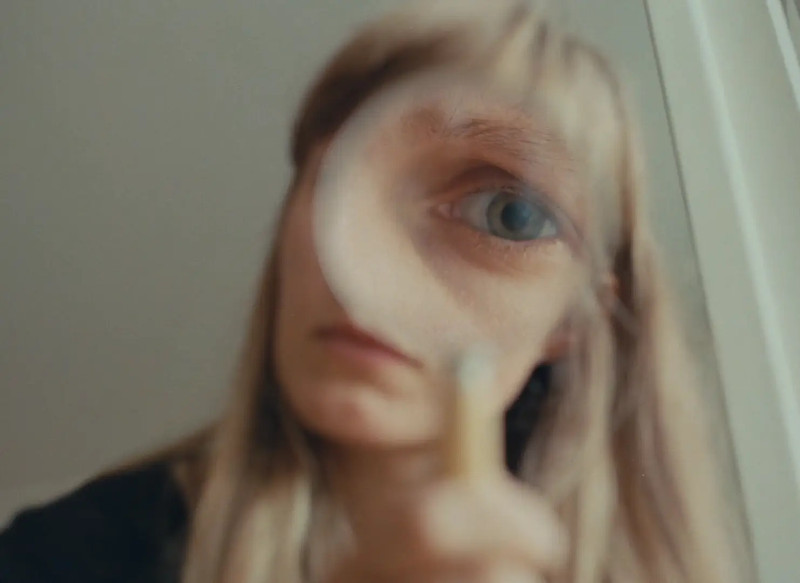
Greta Stoklassa
Certainly, but what I had in mind was such a level of engagement where the author takes a clear attitude to the topic and tries to convince the audience of his or her perspective.
I don’t think I would be able to do that. It is more interesting for me to read than to preach the reality. Films that resonate with me the most are those that offer some kind of a perspective and a space to contemplate and create my own opinion. But I am happy that people also create truly engaged films. It is a disadvantage of agitation films that they try to call people to action and put pressure on the audience. It is better not to underestimate people and to give them some space. But the boundary is very fine – how to do that so that your film would not be an agitation and that people would still listen.
What do you have in the pipeline?
The idea for my next project is rather fresh. My father worked for at the embassy a while and I became fascinated by diplomacy – the fact that it is the power component of the world that is used for peace negotiations at the same time being somehow perverse – sometimes there is a fine line between what is bizarre and what is amoral. I met one renowned Swedish diplomat and want to shoot something about him. In fact, I am attracted to the adverse side of the advanced society, be it Kiruna or the relationship between our world and the developing countries. I am exploring this broad topic and searching for a story that would be able to contain it. I would also like to try to shoot a fiction film that would be based on a true story. Unfortunately, fiction films resonate with people more and more than documentaries. I like films by Lars von Trier and Ruben Östlund – despite being fiction films they contain the psychological and social principles that are learnt through observation. They are so linked to our reality that in some respect they come very close to the documentary genre.
Translated by Viktor Heumann

